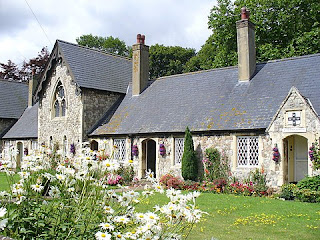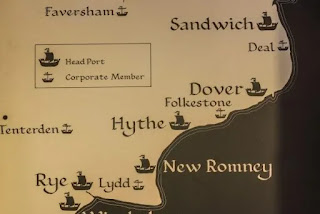One of Edward's first opportunities to appoint a new clergyman came when Ælfweard, Bishop of London, died from leprosy in July 1044. Edward appointed Robert to the position in August. The English were wary of the Norman French influence in England, so Robert was already disliked by people like Godwin, Earl of Wessex. Godwin was expanding his family's power with appointments of his sons to earldoms and his daughter marrying Edward, but a biography of Edward claims that Robert remained the most influential advisor to Edward.
In October 1050, the English Archbishop of Canterbury, Eadsige, died. During his time as archbishop he had leased some of Canterbury's lands to Godwin. When Edward appointed Robert to the position, not only did the first Norman archbishop anger people—not least the monks of Canterbury, who had the right to elect their own choice—but also Robert immediately instigated strife with Godwin by demanding the return of the lands Eadsige had given away.
Robert had to travel to Rome in 1051 to receive the pallium, the symbol of his office. Rumor has it that he went through Normandy and told Duke William that Edward had named William his heir. Upon his return from Rome, he annoyed Edward by refusing to consecrate Edward's choice as his replacement for bishop of London. He claimed that Pope Leo IX had forbidden it, and there is some hint that it may have been so based on Leo's fight against simony, the purchase of ecclesiastical privileges.
It is also just after the Rome trip that Robert claimed knowledge of Godwin's plot to kill the king, contributing to Godwin's flight to Flanders. The biography of Edward also claims that Robert tried to (unsuccessfully) convince Edward to divorce Edith of Wessex, Godwin's daughter. When Godwin returned to England with an army, he was forgiven by Edward. Robert realized his attempts to vanquish Godwin had failed, and now he was in a precarious position in the kingdom.
He self-exiled, and was declared outlaw, and a royal council on 14 September 1052 removed him from his title. He was replaced with Stigand, who had negotiated the peace between Edward and Godwin, despite opposition from Pope Leo IX. Robert's property was divided between Godwin, Harold Godwinson, and Edith of Wessex.
Robert died at Jumièges some time in the 1050s. Duke William of Normandy used his treatment as one of the reasons to invade England in 1066, but that event has been told again and again.
I want to get back to Godwin's fate and Edward, but there's another character that was part of this story, and that is the man that Edward wanted to make bishop of London when Robert was elevated to the archbishopric. That man was named Spearhafoc—a monk and a goldsmith—and tomorrow we'll go into his story.



























